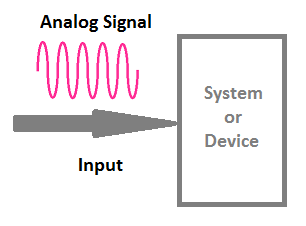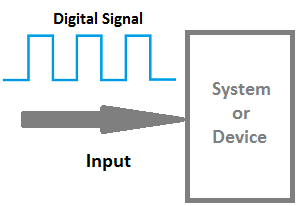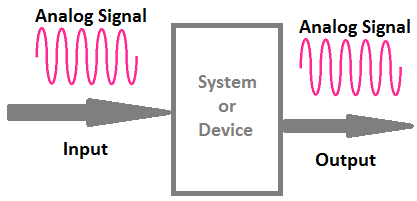What is DI, DO, AI, AO? Their Difference and Examples
If we simplify an automation system, we will get three essential parts - Input, Process, and Output. Any automation system or device takes some inputs and provides output after processing them. Also, we know that electrical or electronic signals are two types -digital signals and analog signals. According to the type of signal, an automation system takes as an input or generates an output is described below.
PLC, DCS, SCADA, IoT, etc are examples of the automation system. So the below discussion is applicable to all automation systems and devices. If you read the full article then you can easily understand the difference between AI, AO, DI, and DO.
AI(Analog Input)
When a system or device takes input signals in an analog format it can be called Analog input. An Analog signal is a continuous signal, there is no ON and OFF condition but unlike a digital signal, it doesn't have a constant maximum voltage. The voltage continuously varies with time according to the nature of the field device or system. When considering analog signals both current and voltage are important factors but in the case of digital signals, only voltage is enough. In most standard automation systems the used analog signal varies from 4-20mA current and 0-10V voltage.
Examples: 1. Temperature sensors provide analog signals and their voltage varies depending on the temperature.
2. The pressure sensor also provides the analog input signal to the system.
3. Flow meter
4. The microphone also provides the analog input to the sound system.
AO(Analog Output)
When a system or device generates output signals in the analog format then it can be called Analog Output. The analog output signal is used to drive the analog devices. It helps to get continuous data from the system. Analog output can be obtained with a very high magnitude also.
Example: 1. Variable frequency drive is an example of Analog Output where the driving system provides a continuous signal to the motor.
2. Different types of meters such as pressure meters, and flow meters required continuous analog signals to display actual values.
3. Speaker also an example of analog output device.
DI(Digital Input)
When a system takes inputs in digital format then it is called Digital Input, in short DI. A Digital signal is basically a binary format signal. It is a discrete signal not continuous. The magnitude of a digital signal is used from 5V to 240V volt according to the system. In most of the cases, in digital circuits, a maximum of 5V DC is used. For example, when the voltage is 0 it is considered as LOW or binary number 0 but when the voltage is 5V, it will be considered as HIGH or binary number 1.
Example: 1. Keyboard in our computer system or laptop is an example of Digital input.
2. Remote Control and its receiver for a system is an example of Digital Input
3. A simple switch for a light bulb is also an example of Digital input - only ON or OFF
DO(Digital Output)
When a device or system generates signals in the digital or binary format then it is called Digital Output or DO. In simple words when there is some voltage at the output it is considered as HIGH or binary number 1 but when there is no voltage at the output it is considered as LOW or binary number 0. So, for a 5V system, it will generate the maximum voltage of 5V.
Example: 1. LED Display of a computer system is an example of a digital output system
2. 'H' bridge controller
3. Valve or Solenoid control using PLC
4. Relay Control using PLC
AIAO(Analog Input Analog Output)
When a system or device takes input in analog format and also provides output in the analog format then it can be called Analog Input Analog Output or AIAO.
Example: 1. Audio system 2. Analog meters
Some system takes input in analog format and converts it into digital format. After processing this signal in digital format, it converts again into analog format.
AIDO(Analog Input Digital Output)
When a system or device takes input in analog format but generates output in digital format then it can be called Analog Input Digital Output or AIDO.
Example: 1. Analog to Digital Converter(ADC) 2. Digital Voltmeter 3. Digital Temperature Meter
DIAO(Digital Input Analog Output)
When a system or device takes input in digital format but generates output in the analog format then it is called Digital Input Analog Output or DIAO. You can see a lot of applications of these devices.
Example: 1. Digital to Analog Converter(DAC) 2. Digital Piano
DIDO(Digital Input Digital Output)
When a system or device takes input in Digital format and also generates output in digital format then it can be called Digital Input Digital Output or DIDO. These systems and devices are more compact and fast than other devices because there is conversion required for the signals and we know that processors are able to work with digital signals only.
Example: 1. Calculator is an example of DIDO 2. Computer System
Read Also:
- What are NO and NC in Electrical Systems and Devices?
- PLC Sinking and Sourcing Module Input Output Connection Diagram
- What is Remote Terminal Unit(RTU)? Block Diagram, Application
- Distributed Control System(DCS) Block Diagram and Architecture
- Understand Architecture and Block Diagram of SCADA System
- Digital Communication Block Diagram and Working Principle








